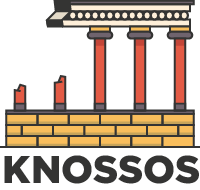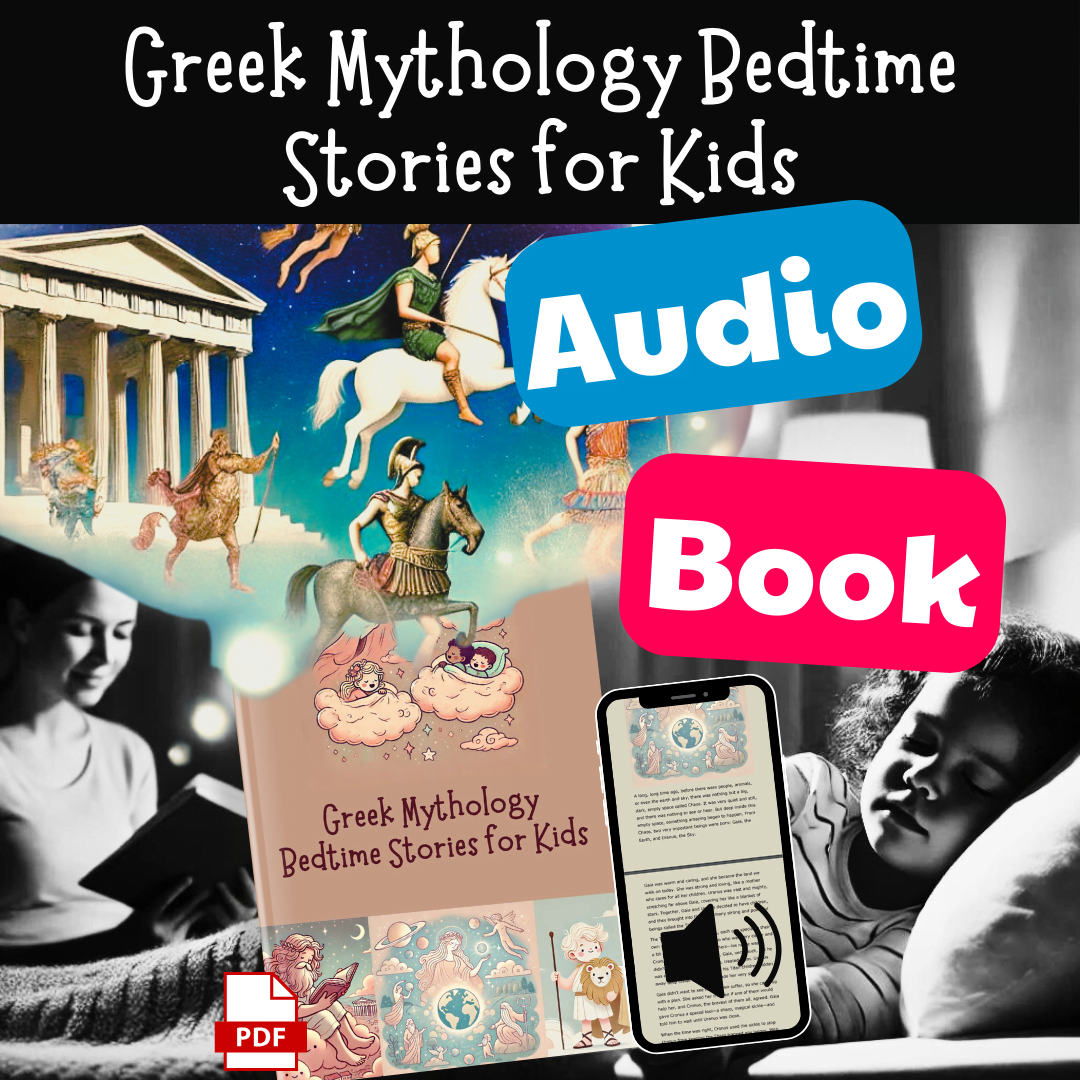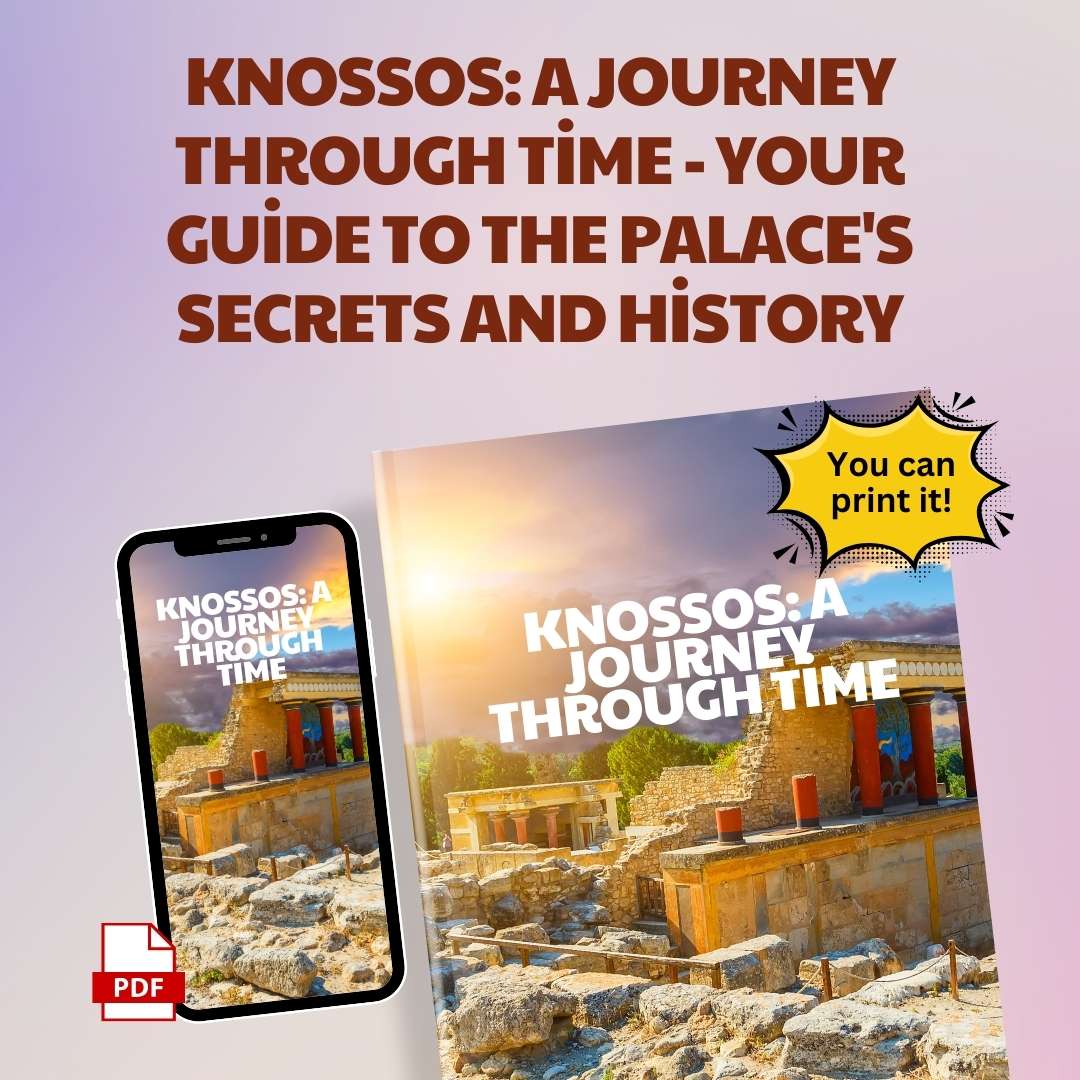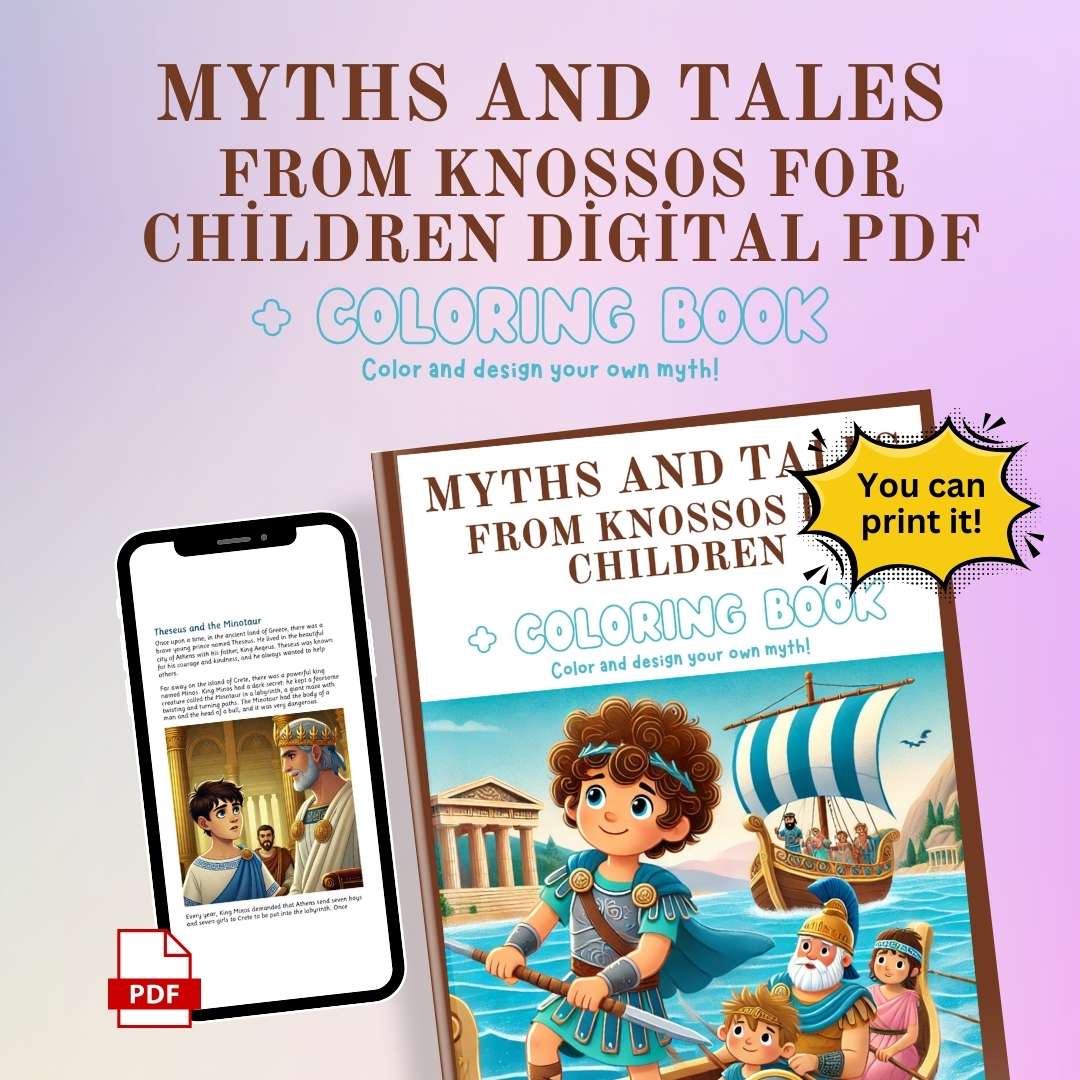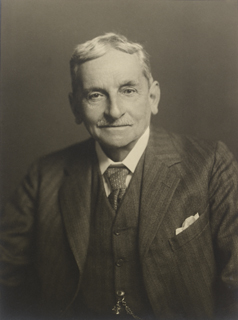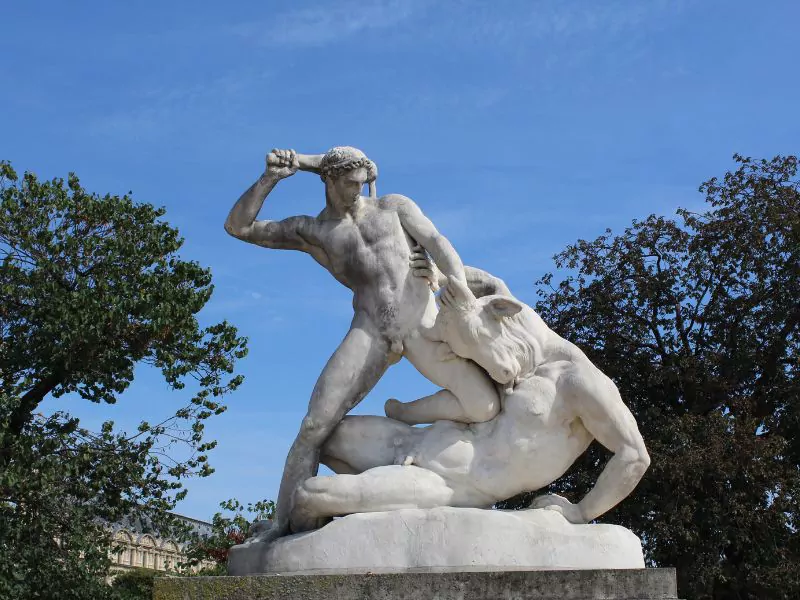
The Myth of Theseus and the Minotaur: A Tale of Heroism and Sacrifice
Audio Book - 12 Greek Mythology Bedtime Stories for Kids
From the Creation of the World to Hercules and from Olympus to the Minotaur. A unique narration with the voice of Grandpa Morpheus, the god of Dreams!
- 12 High Quality Audio Narrations, Unlimited Plays!
- Great Intro to Greek Mythology
- Ideal Gift for kids up to 99yrs old!
- Instant Receive & Downloadable Content
- All Future Updates Included
Have you ever heard of the myth of Theseus and the Minotaur? It is a story that has fascinated people for centuries and continues to captivate audiences to this day and maybe inspired other mythologies also (?). It is a tale of heroism, love, sacrifice, and the power of human will. It is a classic Greek myth that tells the story of Theseus, a young prince, who sets out on a quest to slay the Minotaur, a half-man, half-bull monster, and save his people from being sacrificed to it. In this article, we will delve into the origins and development of this myth, explore its themes and symbolism, and provide an in-depth analysis of the story. So, sit back, relax, and let our journey into the myth begin.

The roots of the Myth of Theseus
The myth of Theseus and the Minotaur has its roots in ancient Greece’s Minoan civilization. The story was centered around the city-state of Athens and its neighboring island, Crete. The legend has evolved over time, and today, there are various versions of the tale available. Still, the basic plot remains the same – a young prince sets out to save his people from being sacrificed to a fierce monster. The myth has gained significant cultural and religious significance among the ancient Greeks and is still celebrated among the modern Greeks.
Characters
To understand the myth of Theseus and the Minotaur, we must first meet the key characters in the story. Theseus is the young prince of Athens who embarks on a dangerous quest to slay the Minotaur. The Minotaur, a half-man, half-bull monster, is imprisoned in a labyrinth built by King Minos of Crete. King Minos is a powerful and tyrannical ruler, and the father of Ariadne, a beautiful princess who falls in love with Theseus. King Aegeus is Theseus’s father, a king who has sent his son to Athens to prove his worth as a leader.
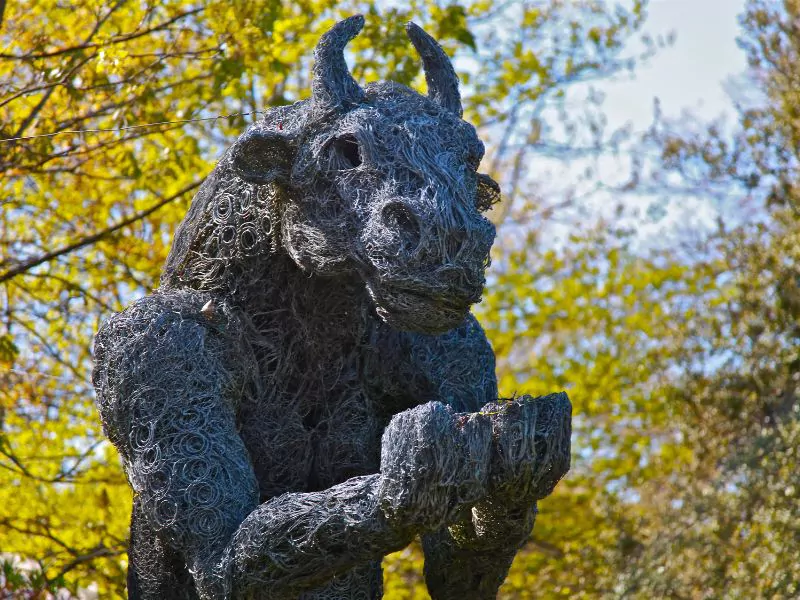
The Myth Unfolding
The Birth of the Minotaur
The tale of the Minotaur’s birth is one steeped in both divine intervention and punishment. King Minos, to assert his right to the throne of Crete, prayed to Poseidon, the sea god, to send him a snow-white bull as a sign of support. Poseidon granted his request with the understanding that the bull would be sacrificed in his honour. However, enthralled by the bull’s majestic beauty, King Minos reneged on his promise and chose to keep the bull.
Angered by this deceit, Poseidon enlisted the aid of Aphrodite, the goddess of love, to enact his punishment. Aphrodite cast a spell that caused Pasiphae, the wife of Minos, to fall in love with the divine bull. This unnatural union led to the birth of the Minotaur, a monstrous creature with the body of a man and the head of a bull. As a constant reminder of Minos’s transgression, the Minotaur was a symbol of shame and a threat to the people of Crete.
The myth of Theseus and the Minotaur
The story of Theseus and the Minotaur begins with a tragic pact between King Aegeus of Athens and King Minos of Crete. After an unfortunate series of events, including the death of Minos’ son, Athens was compelled to send seven young men and seven maidens to Crete every nine years, to be devoured by the Minotaur.
Theseus, the brave prince of Athens, decides to put an end to this gruesome practice. He volunteers to be one of the seven young men on the third sacrificial journey to Crete. Upon his arrival, he catches the eye of Princess Ariadne, who falls deeply in love with him. When she learns of his daunting mission, she decides to help him.
Ariadne consults Daedalus, the architect of the labyrinth. He advises her to give Theseus a ball of thread, which later becomes known as ‘Ariadne’s thread’. Theseus unravels the thread as he ventures deeper into the labyrinth, leaving a path for his safe return.
After a fierce battle, Theseus slays the Minotaur, and with Ariadne’s thread, he successfully navigates his way out of the labyrinth. Their return journey to Athens is filled with further adventures and trials. The myth of Theseus and the Minotaur is not only a tale of heroism but also a story rich in intriguing details. One lesser-known aspect is the origin of the term “clue.” In the myth, Theseus uses a ball of thread, given to him by Ariadne, to navigate the labyrinth. This ball of thread was called a “clew,” which over time evolved into the modern word “clue,” now meaning a guide or piece of information that helps solve a problem or mystery. This etymological journey reflects how ancient myths continue to influence our language today. This epic tale of courage and sacrifice serves as a testament to the human spirit’s tenacity, encapsulating themes of love, honour, and duty that continue to resonate in today’s society.
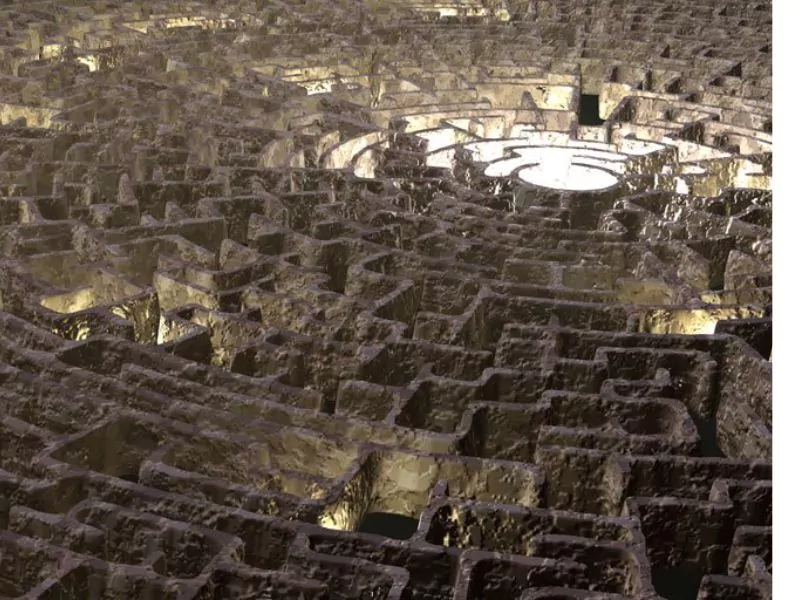
The Labyrinth: The House of Minotaur
The Labyrinth, an intricate maze designed by the legendary craftsman Daedalus, was constructed to confine the Minotaur, keeping its ferocity hidden from the world. The Minotaur was fed an annual gruesome tribute of seven Athenian youths and maidens, a macabre testament to Minos’ rule and the creature’s terror.
The labyrinth is a cornerstone part of the Myth of Theseus and the Minotaur. The labyrinth symbolizes the challenges we face in life, and how it takes courage and determination to overcome them. As you explore the ruins of Knossos Palace, you’ll marvel at the intricate design of this ancient monument. You’ll also gain insight into this time period and its incredible stories. With its many winding pathways, Knossos Palace’s labyrinth is an unforgettable experience.
The return of Theseus to Athens and the death of Aegeas
Theseus returned to Athens with his beloved, the Amazon princess Hippolyta. While celebrating, Theseus forgot to change the sail of his ship from black – signifying mourning – to white. His father Aegeas, thinking that his son was dead, threw himself off a cliff into the sea, which since then has been renamed after him – the Aegean Sea.
It is said that Theseus was grief-stricken by his father’s death, and vowed never to return to Crete again. His victory over the Minotaur was one of the most famous stories not only in Greek mythology, but throughout classical literature, as it serves symbolically as a triumph of good over evil. The courage of Theseus continues to be remembered to this day, embedded in the mythological legacy that has been passed down through generations.
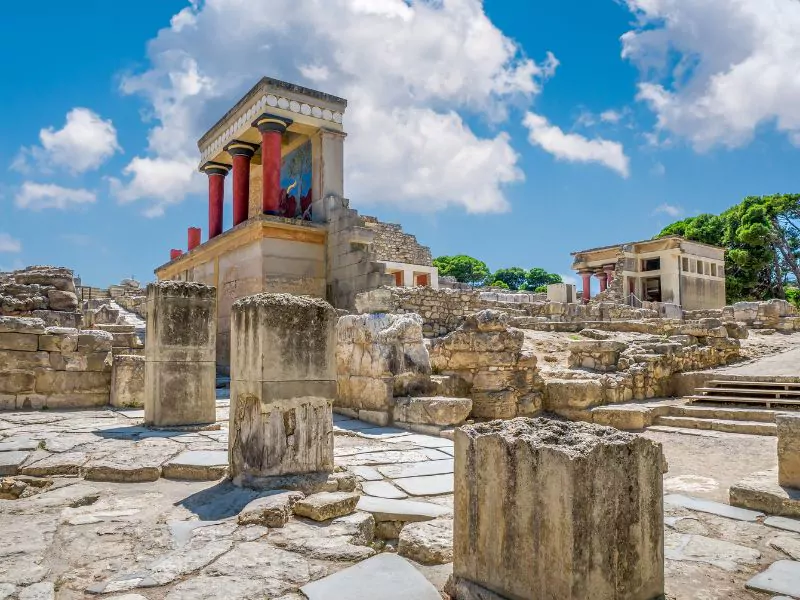
Themes of the Myth
The myth of Theseus and the Minotaur explores several key themes, including heroism, sacrifice, and the power of love. Theseus is portrayed as a brave hero who is willing to risk his life to save his people. The story also highlights the importance of sacrifice for the greater good, as Theseus offers himself as a tribute to the Minotaur to save others from being sacrificed. The myth also emphasizes the power of love, as Ariadne falls in love with Theseus and helps him defeat the monster.
Symbolism and Imagery
The myth of Theseus and the Minotaur is rich in symbolism and imagery. The Labyrinth symbolizes the complex weave of life, and the Minotaur represents the dark and savage aspects of human nature. The thread that Ariadne gives to Theseus represents the guiding force that helps him navigate through the Labyrinth and emerge victorious. These symbols and imagery contribute to the myth’s storytelling and add layers of meaning to the tale.
The myth reflects the ancient Greeks’ understanding of divinity, punishment, and morality. The Minotaur, a creature born of disobedience to the gods, symbolizes the dire consequences of impiety and arrogance. Its death at the hands of Theseus signifies the triumph of human courage and intellect over brute force and terror.
Moreover, archaeological findings, particularly the palace complex at Knossos, believed to be King Minos’ palace, suggest that the myth could have been influenced by the Minoan civilization’s bull-worshipping culture and their architectural prowess.
In conclusion, the Minotaur legend, while a gripping narrative, serves as a mirror to the cultural, religious, and moral fabric of ancient Greece. Its analysis offers valuable insights into the complexities of human nature, the dynamics of power, and the historical context that gave birth to such a captivating myth.
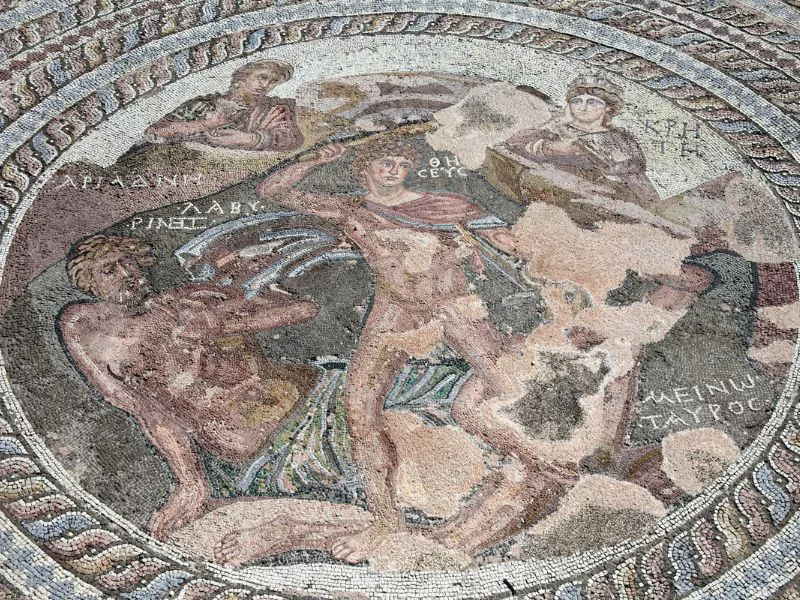
Symbolism and Representations of King Minos
King Minos, in the myth of Theseus and the Minotaur, embodies the complexities of leadership, justice, and morality in ancient Greek society. His character often sparks debate among social scientists, as it juxtaposes the virtues of wisdom and leadership against acts of vengeance and cruelty.
The annual tribute he demands of Athens not only asserts Crete’s supremacy but also underscores the darker facets of power—how it can be wielded to instill fear and maintain control. Furthermore, Minos’ interactions with Daedalus, the architect of the Labyrinth, highlight the perennial tension between authority and creativity, suggesting that the innovative spirit, when constrained by political agendas, can lead to creations both magnificent and monstrous. The myth, therefore, serves as a rich text for exploring the nuances of leadership and the ethical dimensions of exercising power.
The Myth of Daedalus and the Myth of Theseus
The myths of Daedalus and Theseus, while seemingly disparate at first glance, share a profound interconnectedness that goes beyond their common setting in the labyrinth. From a social science perspective, both myths can be seen as narratives that explore the human condition, encapsulating themes of ingenuity, ambition, courage, and the consequences of human actions.
Daedalus, a figure emblematic of human creativity and technical prowess, represents the boundless potential and peril of human intellect. His creation of the labyrinth, meant to contain the Minotaur, symbolises the double-edged sword of innovation—wherein lies the capacity for both societal advancement and entrapment by our own devices. The myth of Theseus, on the other hand, highlights the facets of bravery, sacrifice, and leadership. Theseus’ voluntary entrance into the labyrinth and subsequent defeat of the Minotaur underscore the human capacity for overcoming adversity through courage and wit.
The labyrinth itself, pivotal in both myths, serves as a powerful metaphor for life’s complexities and challenges. It suggests that navigating life—much like navigating the winding paths of the labyrinth—requires guidance, wisdom, and the bravery to face the unknown.
Furthermore, these myths touch upon themes of power and morality. King Minos, with his demand for Athenian sacrifices, exemplifies the potential for leadership to be marred by vengeance and cruelty. This contrasts with Theseus’ embodiment of heroic leadership, willing to risk his own life for the sake of others.
In conclusion, the myths of Daedalus and Theseus, through their exploration of human intellect, leadership, and the moral complexities of power, offer rich material for social scientific inquiry. They invite reflections on the nature of innovation, the qualities of leadership, and the timeless quest to find one’s way through the labyrinths of existence.
Theseus Myth and Modern Representations
The myth of Theseus and the Minotaur continues to resonate in contemporary society, serving as a source of inspiration for various forms of modern representation. In literature, cinema, and even video games, the themes of heroism, intellect over brute force, and the complexity of human nature find new expressions.
These adaptations often reinterpret the classic elements of the myth, reflecting current societal concerns and values. For instance, in modern storytelling, the labyrinth can symbolize the challenges of navigating the modern world, while the Minotaur may represent personal demons or societal evils. These contemporary renditions not only pay homage to the original myth but also demonstrate its enduring relevance.
They underscore the timeless nature of its themes and the continuous human quest for meaning, courage, and identity amidst the labyrinthine complexities of life. Through these modern representations, the myth of Theseus and the Minotaur endures, affirming the power of ancient stories to speak to the human condition across ages.
Bonus Trivia: Theseus’s Unknown Diplomatic Skills
Theseus is a legendary Athenian hero known for his many adventures, including slaying the Minotaur and uniting Attica into a single kingdom. One lesser-known detail about Theseus is that he was also a skilled diplomat. He used his diplomatic skills to forge alliances with other Greek city-states and to secure peace for Athens.
In one of his most notable diplomatic achievements, Theseus persuaded the city of Thebes to return the bodies of the seven fallen Athenian warriors who had died in an attempt to reclaim the city of Thebes from their Theban enemies. This act of diplomacy helped to heal the rift between Athens and Thebes and prevented further conflict between the two city-states.
Theseus’ diplomatic skills were also instrumental in his unification of Attica. He negotiated with the leaders of the twelve independent cities of Attica to persuade them to unite under a single government. This unification made Athens a much stronger city-state and helped to protect it from its enemies.
Theseus’ diplomatic achievements are often overshadowed by his more famous exploits, such as slaying the Minotaur. However, his diplomatic skills were just as important to his legacy as his bravery and strength. He was a true statesman who used his skills to bring peace and prosperity to Athens.
Conclusion
In conclusion, the myth of Theseus and the Minotaur is a fascinating story that continues to touch the hearts and minds of people all over the world. It is a tale of heroism, love, sacrifice, and the human spirit’s power. The myth’s significance and enduring appeal are a testament to its universal themes and the richness of symbolism and imagery woven into the story. Understanding and appreciating ancient mythology is an essential part of our cultural heritage, and the myth of Theseus and the Minotaur is a shining example of that legacy.
Knossos: Your Guide to the Palace's Secrets
- 51 Pages Digital Companion
- Archaeological Facts
- All Knossos PoI's (Little Palace, Caravanserai etc)
- Best of the Market
- Deep History (made by using historical facts and research papers)
- Instant Receive
-Single License-
Myths and tales from Knossos for children +coloring book
- Beautifully Illustrated: Vivid, child-friendly illustrations that capture the magic of Greek myths.
- Educational and Fun: A perfect blend of entertainment and education, introducing children to Greek mythology.
- Bonus Coloring Book: Includes a coloring book filled with exciting scenes.
-Single License-
